Blaise Pascal was a French mathematician, scientist, religious philosopher and writer who made important contributions to all these fields. A child prodigy, Pascal discovered the Pascal’s Theorem in projective geometry and invented the first fully functional mechanical calculator before he reached the age of 20. He became a follower of Jansenism at the age of 23, known as his “first conversion”; and at the age of 31, he experienced an intense religious feeling, known as his “second conversion”, after which he focused his talents almost exclusively on religious writing. Historians usually divide the life of Pascal into five periods: early years, first conversion, worldly period, second conversion and final years. Though not entirely accurate, this remains a popular way of analyzing his life. Pascal suffered from ill health through most of his life and died at an early age of 39. Know more about the family, life, career, important works and death of Blaise Pascal through these 10 interesting facts.
#1 HE BECAME SEVERELY ILL IN CHILDHOOD SUPPOSEDLY DUE TO WITCHCRAFT
Born on 19th June 1623 in Clermont-Ferrand, France, Blaise Pascal was the son of Étienne Pascal and his wife Antoinette Begon. Blaise’s niece Marguerite Périer later recounted an interesting incident about his childhood. When he was about a year old, Blaise fell victim to a strange illness. His abdomen became swollen and he used to have fits in which he cried out loud and twisted and turned violently. Neighbors attributed this peculiar condition to witchcraft and blamed a poor elderly woman who occasionally worked for the Pascal family; and was reputed to be a witch. Étienne Pascal initially rubbished the suggestion but as all forms of treatment failed, he threatened the supposed witch. She accepted that she had cast a fatal spell on the child which could only be undone by transferring it to some other creature. As prescribed by her, special herbs were applied to Blaise’s stomach and two cats were tossed out of the window to their death. After three tense weeks, Blaise Pascal was cured of the condition and his health began to improve.
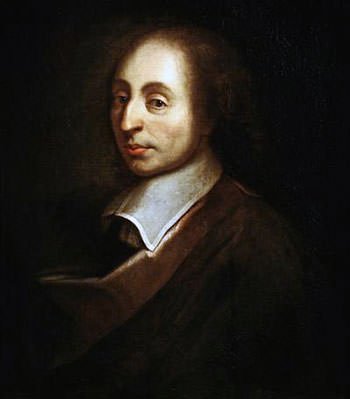
#2 HE WAS EDUCATED BY HIS FATHER AND NEVER ATTENDED ANY SCHOOL OR UNIVERSITY
Blaise Pascal had an elder sister named Gilberte and a younger sister named Jacqueline. His parents had one more child, who died in infancy. Gilberte would go on to become Pascal’s first biographer and serve as a fierce guardian of his reputation; while Jacqueline displayed an early literary genius and earned acclaim as a poet and dramatist before becoming a nun at Port-Royal. When Blaise was three years old, his mother Antoinette died. His father Etienne was a magistrate, civil servant and member of the French aristocratic and professional class known as the noblesse de robe. The Pascal family enjoyed a comfortable, upper-bourgeois lifestyle. In 1631, five years after the death of his wife, Etienne moved with his children to Paris. Over the next nine years, he devoted himself to his amateur scientific and mathematical pursuits; and to the education of his children, all of whom showed extraordinary intellectual ability. In fact, Blaise Pascal never attended any school or university.
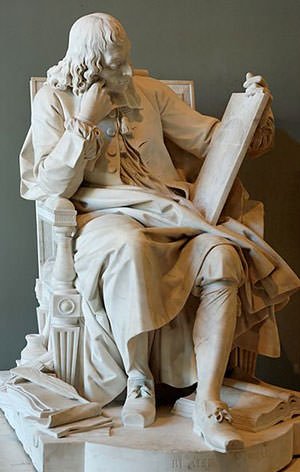
#3 BLAISE PASCAL WAS A CHILD PRODIGY
Etienne Pascal taught his son Latin and Greek as well as history, geography and philosophy. The curriculum also included civil and canon law; and study of the Bible. Initially, Etienne omitted mathematics from his son’s curriculum out of concern that he would become so fascinated with the subject that he wouldn’t be able to focus on other subjects. It is said that by the age of 12, Blaise started drawing geometric figures on the floor of his playroom and making his own discoveries about mathematics like the interior angles of a triangle add up to the sum of two right angles. On watching the genius of his son, Etienne allowed him to study mathematics and gave him a copy of Euclid’s Elements. At the age of 13, Etienne also introduced Blaise to Académie libre, a society which discussed current topics in science and mathematics; and included such prominent names as Mersenne, Fermat, Desargue and Descartes.
#4 HE DISCOVERED PASCAL’S THEOREM AT THE AGE OF 16
On being introduced to mathematics, Pascal took a particular interest in the work of Desargues on conic sections. Following Desargues’ thinking, at the age of 16, Pascal produced a short treatise titled Essai pour les coniques (Essay on Conics) in the emerging field of projective geometry. The essay includes what is now known as Pascal’s Theorem. It states that if a hexagon is inscribed in a conic section then the three intersection points of opposite sides lie on a straight line; now referred to as the Pascal line. Pascal’s Theorem was Pascal’s first important mathematical discovery and a breakthrough contribution in the field of projective geometry. The work was so advanced for a 16-year old that renowned French mathematician Rene Descartes was convinced that Pascal’s father had written it. When persuaded otherwise, Descartes said words which hint at jealousy of Pascal’s talent.
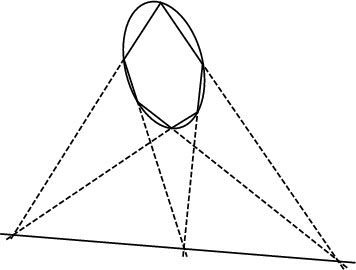
#5 PASCAL INVENTED THE WORLD’S FIRST FULLY FUNCTIONAL MECHANICAL CALCULATOR
In 1639, Pascal’s father Étienne was appointed commissioner of taxes in the city of Rouen. To help his father in laborious tax calculations, in 1642, 19-year old Blaise Pascal constructed a mechanical calculator capable of performing addition and subtraction directly; and multiplication and division through repeated addition or subtraction. Known as Pascal’s calculator or the Pascaline, it was especially successful in the design of its carry mechanism, which adds 1 to 9 on one dial, and when it changes from 9 to 0, carries 1 to the next dial. The Pascaline was world’s first fully functional mechanical calculator, and in 1649 Pascal received a royal patent on the device. A few decades before Pascal, German professor Wilhelm Schickard had made a failed attempt at mechanizing calculation.
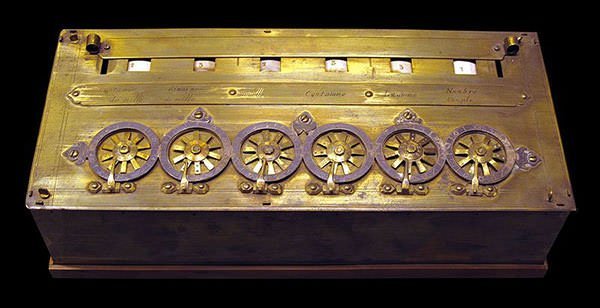
#6 HE BECAME A FOLLOWER OF JANSENISM IN 1646
In January 1646, Etienne Pascal slipped on ice and broke his hip, a very dangerous condition at the time. Two of the finest bonesetters, the brothers Deschamps, were called by the Pascal family. The two men were members of a Catholic theological movement known as Jansenism. The Jansenists, among other things, believed that salvation is achieved not by human virtue or merit but solely by the grace of God. They practiced an ascetic lifestyle emphasizing penance, austerity and devotional exercises. The Deschamps brothers stayed with the Pascal family for three months till Etienne recovered fully. During this time they were able to influence the Pascal family with their teachings. Blaise Pascal was the first to follow the new faith and he soon converted the rest of the family too. This is usually referred to as the “first conversion” of Blaise Pascal. His sister Jacqueline, who was also a child prodigy, eventually became a Jansenist nun at Port-Royal Abbey, Paris.
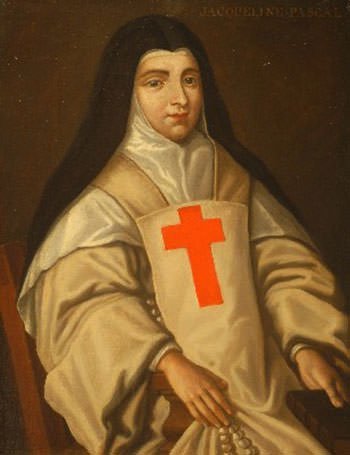
#7 HE FOUNDED THE THEORY OF PROBABILITY
A couple of years after his “first conversion”, Blaise Pascal retreated from his pledge to serve only God and resumed his scientific endeavors. This phase in his life lasted from 1648 to 1654 and it is often termed by historians as his “worldly period”. During this period, Pascal proved through his famous experiment at the Puy-de-Dôme that atmospheric pressure decreases with height; and independently arrived at the Pascal’s triangle, a convenient tabular presentation for binomial coefficients. Though Pascal’s triangle was known to other cultures for many centuries, it was Blaise Pascal who popularized it in the Western world and hence it bears his name. Also in 1654, Pascal corresponded on the subject of gambling problems with his friend Pierre de Fermat, a lawyer, an amateur mathematician and a noted gambler. Together the two effectively founded the modern theory of probability; considered Pascal’s most influential contribution to mathematics.
#8 HE LEFT HIS SCIENTIFIC PURSUITS AFTER HIS “SECOND CONVERSION”
Pascal’s father died in 1651. Soon after that his sister Jacqueline announced her decision to become a nun. Pascal was upset as he needed her help due to his poor health but her decision was final. On November 23, 1654, between the hours of 10:30 pm and 12:30 am, while lying on his bed, Blaise Pascal experienced the religious revelation that his biographers refer to as his “second conversion” or “night of fire.” He recorded the experience in a brief note to himself known as the Memorial, sew this document into the lining of his jacket and always transferred it when he changed clothes. It was discovered only after he died. After his “second conversion”, Blaise Pascal formally renounced his scientific and mathematical studies; and focused his talents almost exclusively on religious writing and the glorification of God.
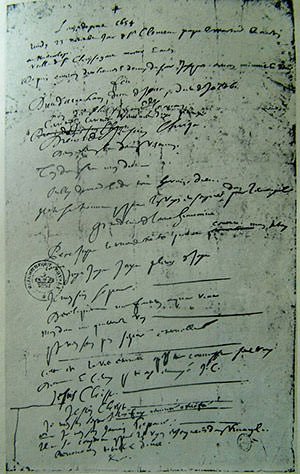
#9 HE WROTE INFLUENTIAL THEOLOGICAL WORKS
Soon after Pascal’s “second conversion”, there was a controversy which pitted Jansenism against the Pope, the Jesuit order and a majority of the bishops of France. In 1656-57, under the pseudonym Louis de Montalte, Blaise Pascal published a series of 18 public letters attacking the Jesuits and defending the Jansenist doctrine, which became known as Lettres provinciales (Provincial letters). The reaction to the letters was substantial; and Pascal’s use of wit, humor and mockery in attacking existing institutions made the work extremely popular as a literary masterpiece. Pascal’s most influential theological work was however Pensées (“Thoughts”), which remained unfinished at the time of his death. It contained a detailed and coherent examination and defense of the Christian faith. Pensées first appeared in print in 1669 and soon became a classic. It is widely considered to be a landmark in French prose.
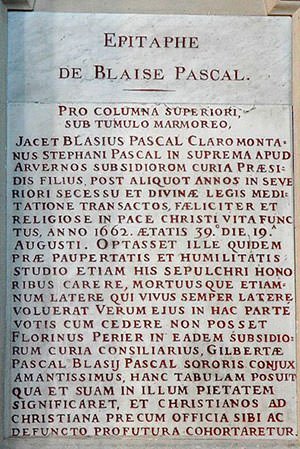
#10 PASCAL SUFFERED FROM ILL HEALTH THROUGH MOST OF HIS ADULT LIFE
Pascal suffered from ill health for most of his life. In fact, his elder sister and biographer Gilberte wrote that after his 18th birthday, he never lived a day of his life free from pain or from some sort of illness or medical affliction. Blaise Pascal died on 19th August 1662 in Paris with his last words being, “May God never abandon me”. He was 39 years old; and he never married or had any children. Pascal was buried in the cemetery of Parisian church Saint-Étienne-du-Mont. He is considered one of the most influential scientists and mathematicians. For his contributions to the field of hydrostatics, the SI unit of pressure is named pascal (symbol: Pa). Due to works like Lettres provinciales and Pensées, Pascal is also regarded as one of the most important authors of the French Classical Period and is read today as one of the greatest masters of French prose.


thanks for the info highly appreciayed
Not trying to be mean or anything but you misspelled appreciated.